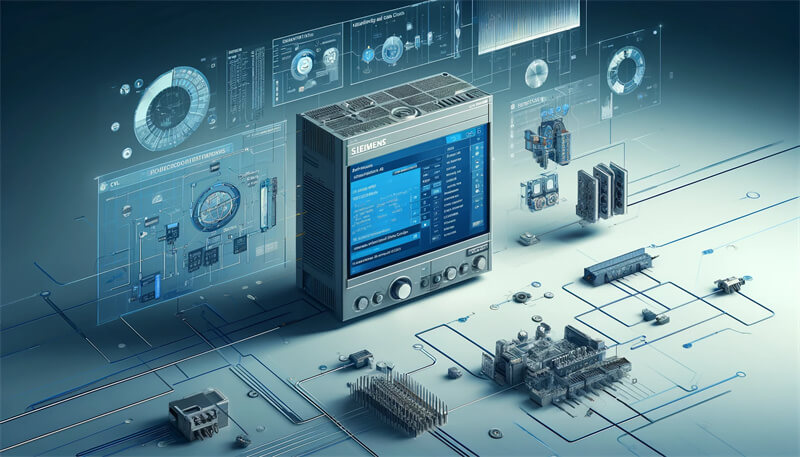ControlNexus, established in 2013, stands as a leading provider of Siemens PLCs, HMIs, and Inverters. In this article, we delve into the intricacies of Data Blocks (DBs) in Siemens PLC programming, aiming to provide a comprehensive understanding for both beginners and experienced professionals alike.
Key Takeaways
Here’s a quick summary of what you’ll learn in this article:
| Topic | Summary |
|---|---|
| Types of PLC Blocks | Explore the different types of PLC blocks and their significance in programming. |
| Understanding Data Blocks | Learn about the definition, purpose, and types of Data Blocks in Siemens PLCs. |
| Practical Applications of DBs | Discover real-world examples of using DBs in PLC programming. |
| Creating and Managing DBs | Step-by-step guide on creating and managing DBs in Siemens PLCs. |
| Working with Other PLC Blocks | Integration and interaction of DBs with other PLC blocks. |
| Troubleshooting and Optimization | Tips for troubleshooting and optimizing DB usage for improved performance. |
Now, let’s dive deeper into understanding Data Blocks (DBs) in Siemens PLC programming.
I. Introduction
Siemens PLC programming involves the utilization of various blocks to execute tasks efficiently. Among these blocks, Data Blocks (DBs) play a crucial role in storing and managing data within the PLC. In this guide, we’ll explore the fundamentals of DBs and how they contribute to the overall functionality of Siemens PLC systems.
II. Types of PLC Blocks
Overview
PLC programming involves different types of blocks, each serving a specific function within the system. These blocks include:
- Organization Blocks (OBs)
- Function Blocks (FBs)
- Function Calls (FCs)
- Data Blocks (DBs)
Each type of block has its own unique purpose and usage within the PLC program.
Understanding Data Blocks (DBs)
Among the various types of PLC blocks, Data Blocks (DBs) are essential for storing and managing data within the PLC memory. DBs serve as memory areas where data relevant to the PLC program is stored, allowing for efficient access and manipulation during runtime.
Importance of DBs
DBs play a crucial role in facilitating communication between different parts of the PLC program, enabling seamless operation and data exchange. Understanding the significance of DBs is essential for effective PLC programming and system integration.
III. Practical Applications of DBs
Real-world Examples
DBs find applications in various industrial automation scenarios, including:
- Data logging
- Communication between PLCs
- Interfacing with Human Machine Interfaces (HMIs)
- Storing process parameters and variables
IV. Creating and Managing DBs in Siemens PLC
Step-by-step Guide
Creating and managing DBs in Siemens PLCs involves several steps, including:
- Accessing the programming environment (e.g., TIA Portal).
- Creating a new DB in the project structure.
- Defining the data structure and variables within the DB.
- Configuring DB properties and access permissions.
- Integrating DBs into the PLC program logic.
V. Working with Other PLC Blocks
Integration and Interaction
DBs interact with other PLC blocks, such as OBs, FBs, and FCs, to execute tasks and process data within the PLC program. Understanding how DBs integrate with other blocks is essential for designing efficient PLC programs.
VI. Troubleshooting and Optimization
Common Issues
Despite their importance, DBs can sometimes pose challenges in PLC programming. Common issues include:
- Data corruption or loss
- Inefficient memory usage
- Communication errors
Troubleshooting Tips
To address these issues, consider the following troubleshooting tips:
- Verify data integrity: Ensure that data stored in DBs is accurate and consistent.
- Optimize memory usage: Review DB structure and variables to minimize memory consumption.
- Check communication settings: Verify communication parameters for seamless data exchange between PLCs.
- Monitor performance: Use diagnostic tools to identify bottlenecks and optimize DB usage for improved performance.
Optimization Strategies
To optimize DB usage in Siemens PLC programming, consider the following strategies:
- Implement efficient data structures: Use structured data types and arrays to organize data within DBs.
- Limit unnecessary data storage: Store only essential data in DBs to conserve memory resources.
- Utilize asynchronous data exchange: Implement asynchronous communication mechanisms to improve data transfer efficiency.
- Regular maintenance: Perform periodic checks and optimizations to ensure optimal DB performance over time.
VII. Conclusion
Understanding Data Blocks (DBs) is essential for effective Siemens PLC programming. By mastering the concepts and best practices outlined in this guide, you’ll be equipped to create efficient PLC programs and troubleshoot common issues with confidence.
Stay tuned for more informative articles and guides on Siemens PLCs, HMIs, and Inverters from ControlNexus.
For inquiries or assistance with Siemens automation solutions, contact us today.
Continue exploring Siemens PLC programming and automation solutions with ControlNexus.
References
- Siemens Global: https://www.siemens.com/global/en/products/automation/industry-software/automation-software/tia-portal/software/step7-tia-portal.html
- Instrumentation Blog: https://instrumentationblog.com/
- Industry Support Siemens: https://support.industry.siemens.com/



